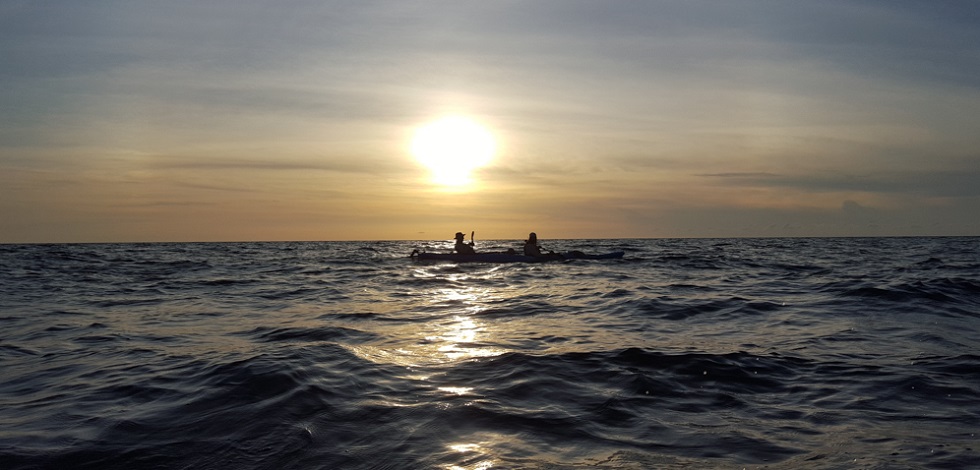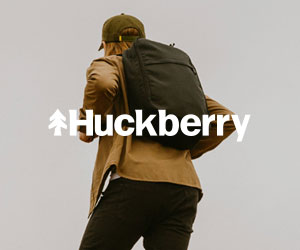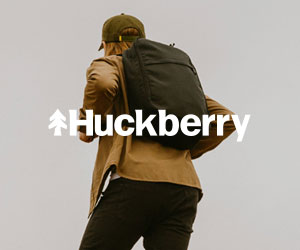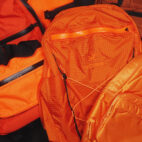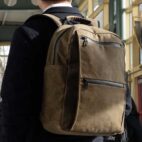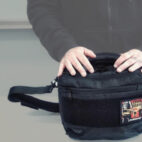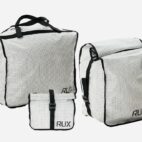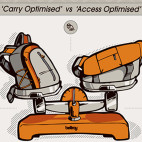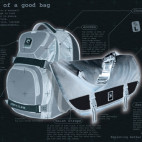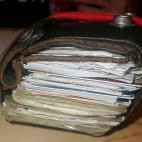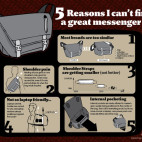Cuba, Kayaks and Carry:: The Crossing (Cotopaxi Challenge 113 Part III)
In the final dispatch from Cuba, Frank Sedlar recounts what happens when an adventure gets good and the wider impact of the Cotopaxi Challenge 113.

“Man overboard!” yells someone from the deck of the support boat Sunluver. My neck cranes into the messy black canvas of night and waves. A spotlight lights up the churning swells. The bearded, bobbing head of Cotopaxi’s CEO Davis Smith can momentarily be seen. His cousin and kayak partner, Davis McKay, a few meters back. Though visibly shaken and overboard in the rough seas, they would be okay. Their kayak however would not be so fortunate.
It’s been nine hours since our expedition left Marina Hemingway in Havana, Cuba. The flash of cameras from circling media and an escort provided by the Cuban National Kayak Team kept the first leg of the 113 miles relaxed. We paddled out of the harbor with the American red, white and blue mixing freely with the identical colors (and laughs) of our Cuban counterparts.

But now only 40 miles into the paddle we have some serious problems. Not long after the last hints of red left the sky the seas begin to grow increasingly aggressive, bullying our tiny kayaks. Over the next three hours, a second kayak would succumb to the waves. A third kayak was not far behind, her rudder destroyed and capsized in short order. The entire seasick support crew revived to the deck long enough to answer the frantic “Man overboard!” calls for the second time that night.
As the other six kayakers either stumbled onto the support boats or were dragged from the sea, fellow journalist Brent Rose and I did a quick mental calculation: the result merely confirmed what we already knew. We were in way over our heads. As wave after wave crashed into us we realized that getting aboard the support boats was all but impossible. Our only option was to continue the now solo paddle to Key West, 73 miles north.
At midnight we resumed. The viscous seas powerfully lifting us to their apex. We plunged our oars into the sea and heaved with all we had, shooting forward into the swell with our adrenaline pulsing; white water fizzing on our skin. We disappeared into the night; blood running hot, primitive instincts taking charge, a billion stars above illuminating our condition.
“We were in way over our heads. As wave after wave crashed into us we realized that getting aboard the support boats was all but impossible.”
At daybreak the seas subsided. The otherwise brilliant sunrise dulled by our fatigue as the previous six hours of adrenaline wore off. Readily taking its place was an incessant ache throughout our battered bodies and hallucinations slipping into our weary minds. Curious objects began to materialize on the decks of the support boats. Dim figures danced off the bow of our kayak. I began not to recognize the voice of Brent Rose behind me.

Twenty-four hours into the paddle the sun halted its march across the sky directly above us. As heatstroke joined in the assault on our bodies, the horizon continued to hide any signs of Key West. We began to enter survival mode, only salt pills and Ensure offering any semblance of comfort to our broken bodies. Amidst increasingly severe hallucinations the lights of Key West wouldn’t be spotted for another six hours.
“As heatstroke joined in the assault on our bodies, the horizon continued to hide any signs of Key West.”
On the eve of a second night at sea, the final four hours remain a blur to me. Each paddle stroke seemingly pushed the distant lights of Key West even farther away. The idea to roll out of the kayak instead of taking another stroke began to sound reasonable. It wasn’t until we were informed from the support boat that we were on the cusp of making the first documented Cuba-Florida crossing in a kayak that the success of Challenge 113 first began to seem possible.

Thirty-four hours after setting out from Havana the bow of Fidel Fastro touched land. Tearing off our spray skirts and throwing ourselves onto the beach, our legs instantly give way. For the next 10 minutes the pain and the exhaustion are temporarily forgotten amidst the excitement. Leaning upon each other to remain upright, Brent and I glance behind us across the ocean in the direction of Cuba. Like all good adventures, Cotopaxi’s Challenge 113 had gone nothing as planned.
“…we were informed from the support boat that we were on the cusp of making the first documented Cuba-Florida crossing in a kayak…”

The team was battered and sea-sick. A few of our kayaks were missing, abandoned somewhere at sea. And only one of the four kayaks had made a successful crossing. But Cotopaxi’s first annual altruistic adventuring had been a resounding success.

A success because Challenge 113 was much larger than a record-setting adventure. Meetings were held across Cuba with entrepreneurs to strategize about the impending U.S. tourism market. A friendship agreement was signed with U.S. and Cuban kayak federations. Stateside donations were raised for poverty-fighting charities. And of course the groundwork was established for future joint U.S.-Cuban expeditions. Under the context of adventure, Cotopaxi had pulled off an excellent excuse to get 24 entrepreneurs, adventurers, and philanthropists into historically isolated Cuba to follow through on their motto to do good.

As the pain in my body begins to return in force, the sense of what we’ve been able to accomplish is immense. The fact that a pair of journalists, much more experienced with a pen than a paddle, were able to complete this record crossing. And that this entire altruistic adventure was spearheaded by an 18-month-old outdoor gear company. Despite growing up in an industry overshadowed by responsible adventure pioneers such as Patagonia and The North Face, Cotopaxi is quickly charting a distinct course in philanthropy by means of the gear they make – taking carry to the next level.
Fatigue brings me to my knees as a smile steals across my face. I’m reminded by the words of a Cuban kayaker as we left Havana, “when you are paddling at night, when your body hurts, keep paddling for us.”
“Cotopaxi is quickly charting a distinct course in philanthropy by means of the gear they make…”
For an invite to next year’s Challenge 113 – wherever that may be – get on board with Cotopaxi.
–
Follow Frank’s adventures on Instagram!
Photos by Cassandra Allred and Michael Boren of Red Tractor Productions.





 Carry Awards
Carry Awards Insights
Insights Liking
Liking Projects
Projects Interviews
Interviews
